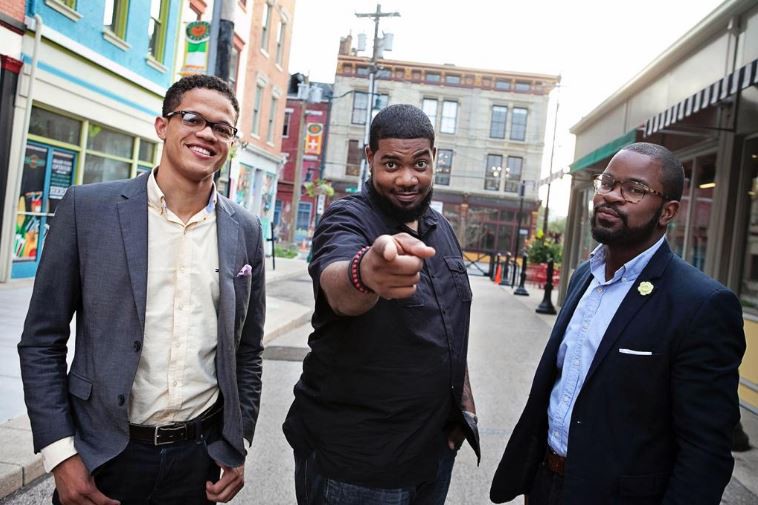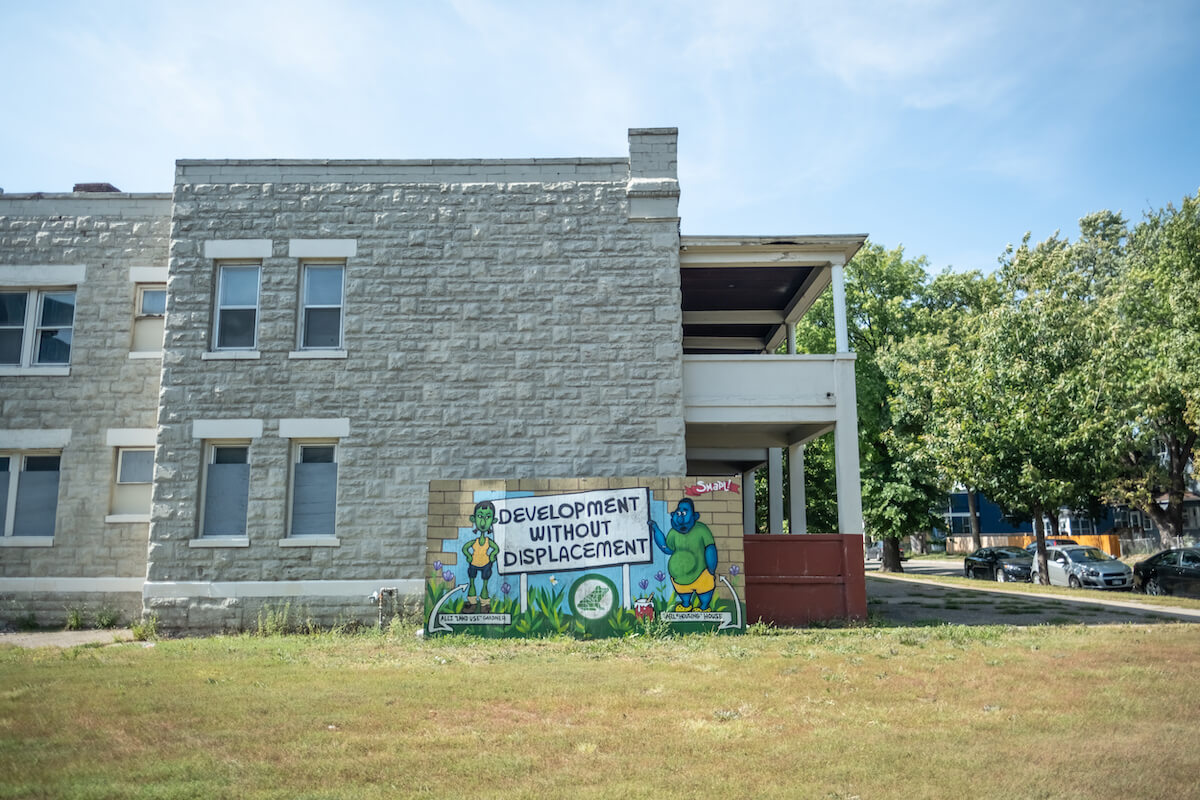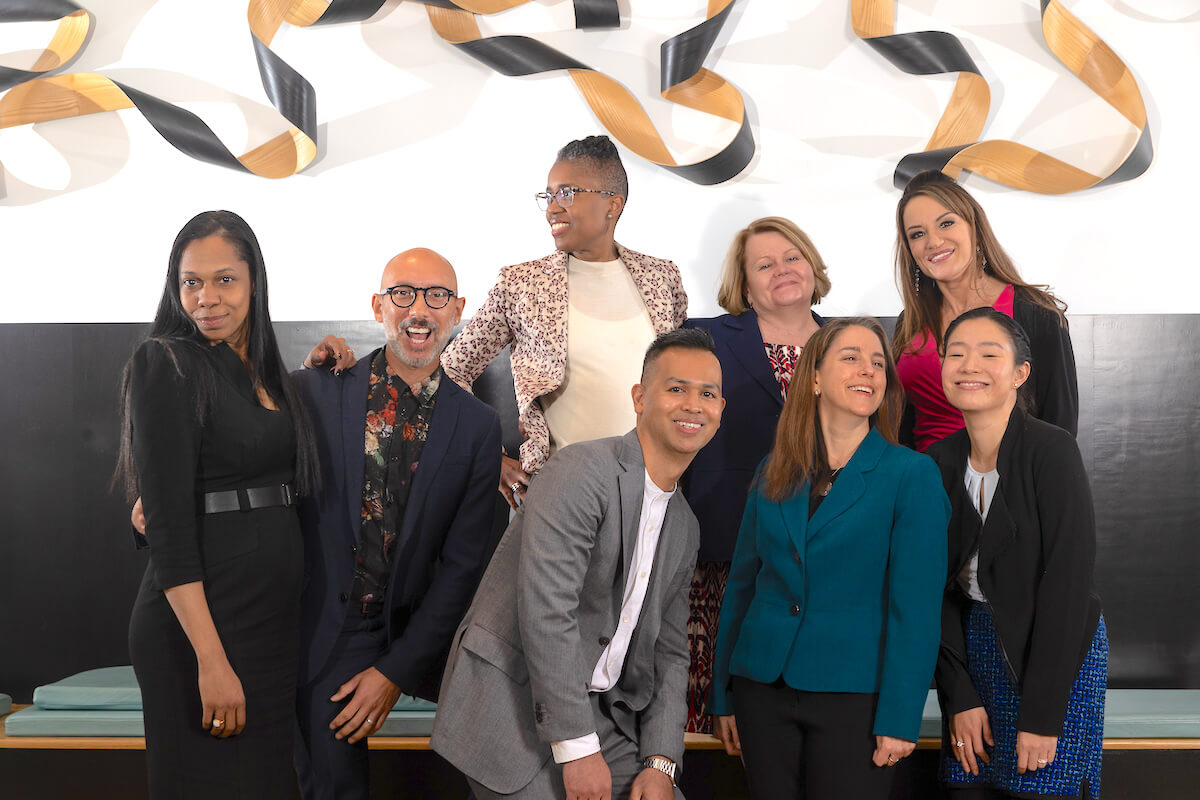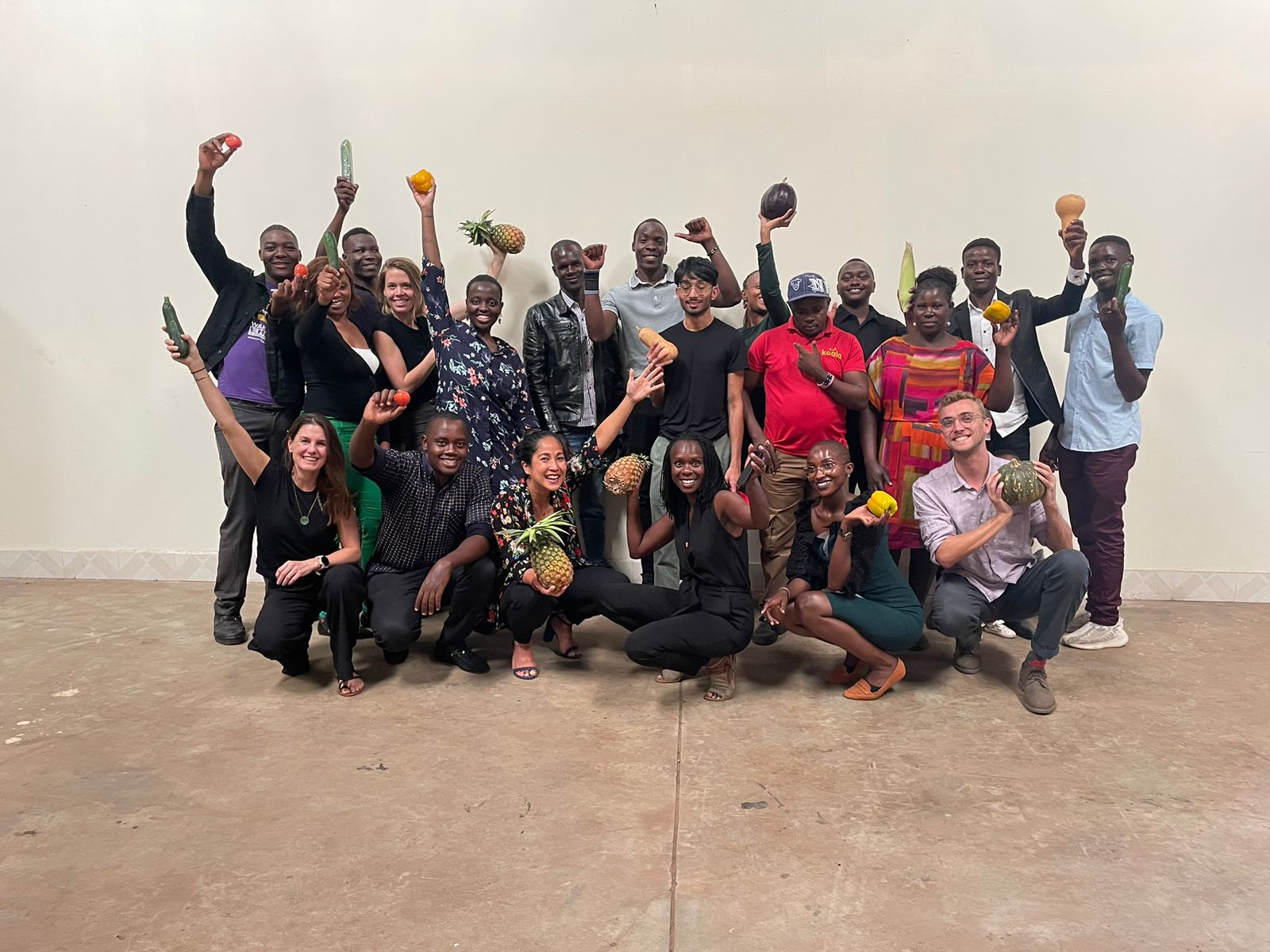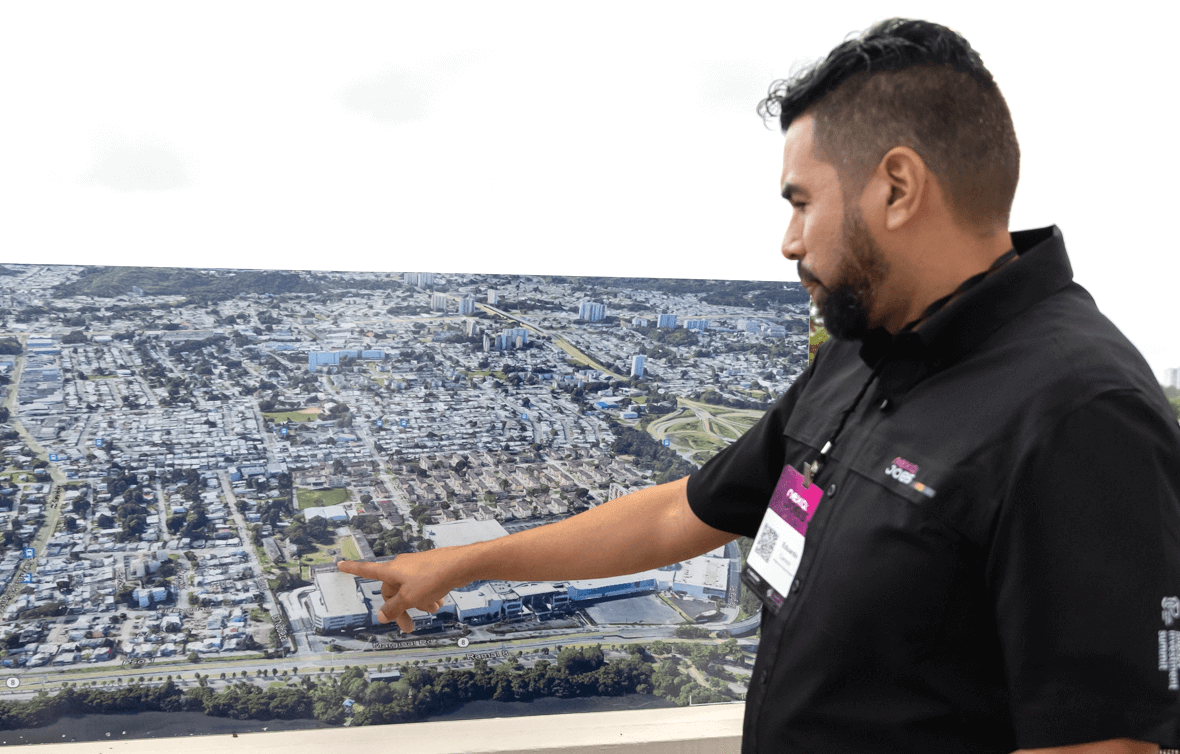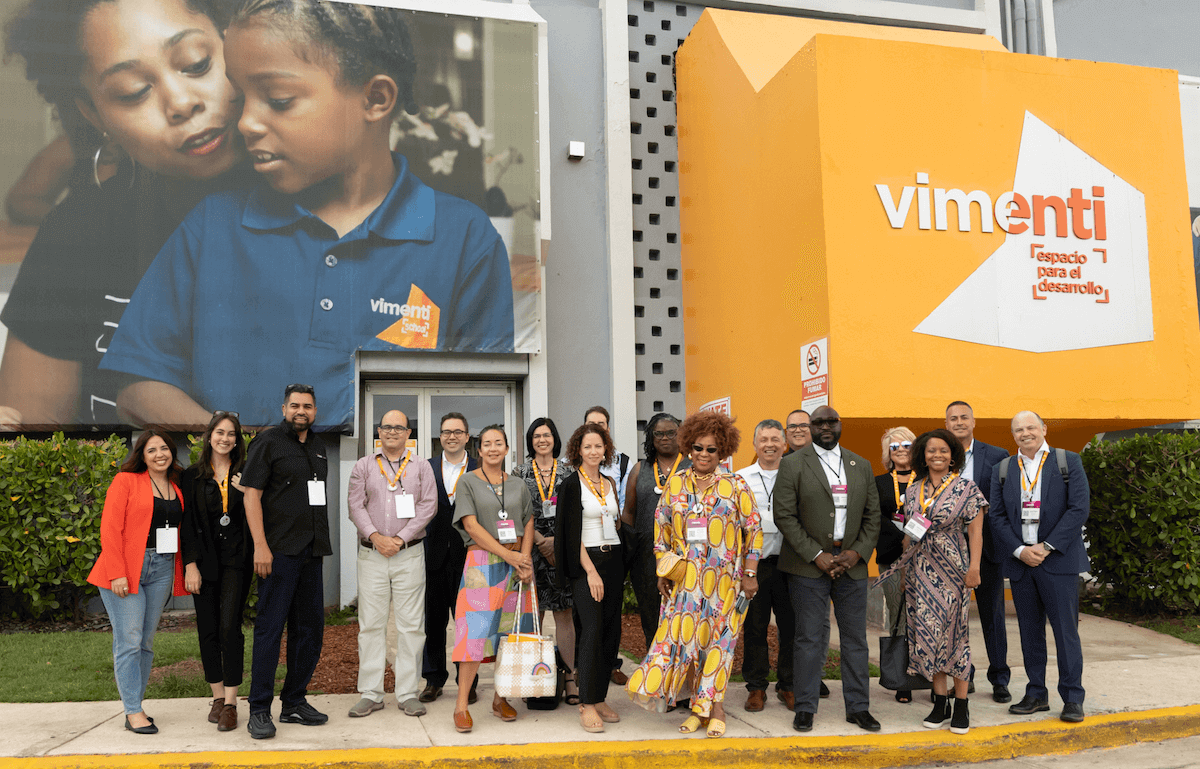We are building an ecosystem in a network of cities, from Seattle, to Cincinnati, to Oakland, to San Francisco, to DC, to deploy a friends-and-family funding tool for entrepreneurs who don’t have a rich uncle.
We (Rosa Lee Harden, Tim Soerens, and I — collectively as Neighborhood Economics) have spent copious time working in five different cities. In that work over the last three years we have seen the same patterns emerging. With the help of Peter Block in Cincinnati, we began to use shorthand for the sectors that are critical to create the team of folks who will move investment and philanthropy to make the right kind of difference in communities of need.
We are now convinced we need to host a summit where “System Entrepreneurs” meet “Anchor Institutions.” We plan to put on the event the two days before SOCAP: invite only, for about 100 people or so.
This Entrepreneurial Ecosystem (as we are calling it) includes seven roles or areas: System Entrepreneur (aka Community Quarterback); Mother Hen; Chief Evangelist; Anchor Institutions; Path to Investability; Financial Tools; and Civic, Community, & Church Engagement.
System Entrepreneurs, Mother Hens and Chief Evangelists
The System Entrepreneur is in the middle of the Entrepreneurial Ecosystem — connecting to community, civic, and church sectors, as well as to anchor institutions — bringing in financial instruments that entrepreneurs can use and providing support for them afterwards. The System Entrepreneur is a code-switcher: able to talk to the city, foundations, banks and financial institutions, investors, idealistic millennial heiresses, and economic development staff; all while retaining credibility and connection to the community.
Years ago, David Erickson at the Fed in SF identified this role as the Community Quarterback. (see “Community Development Needs a Quarterback”). A single local organization serves as a lead systems integrator for antipoverty work within a community, bringing together people who work across sectors. We are seeing that this team leader role is essential. The quarterback metaphor is useful; it signifies that the person moving the system forward has agency and a plan, and is not just reacting.
The System Entrepreneur, or Community Quarterback, has to be aware of the various flavors of institutional power and money as they interact throughout the Entrepreneurial Ecosystem to create a syndicate and capital stack that can create community wealth through entrepreneurship in marginalized communities. System Entrepreneurs work one step removed from direct impact to create community wealth in every neighborhood.
Working alongside the System Entrepreneur, there’s another essential role — which we call the Mother Hen. This role is better understood and historically better funded within the Entrepreneurial Ecosystem. The two roles are complementary; yet require a different set of skills and talents. The Mother-Hen-like focus on the specific business skills of someone leading an accelerator cohort are often not the code-switching ambassador-like mindset of a System Entrepreneur. (Often, a Mother Hen ends up playing the critical function of the System Entrepreneur role. Someone like Derrick Braziel — who is running an accelerator that educates entrepreneurs on investability, which requires his skills as a Mother Hen — also has to play the System Entrepreneur.)
Oakland is the only location we work in where the two essential roles — the System Entrepreneur and the Mother Hen — exist side-by-side. Konda Mason, who leads the Impact Hub, is the code-switching System Entrepreneur. And Rani Croager, of Uptima Business Bootcamp, plays the Mother Hen, with one of the new-style entrepreneurial education platforms guiding microbusiness and neighborhood-scale startups to investability.
The work of the System Entrepreneur is also supported by the Chief Evangelist. In both Cincinnati and Oakland, Neighborhood Economics (NE) played the role of the Chief Evangelist, opening the doors to powerful people and leading or catalyzing fund raising. In Oakland, Neighborhood Economics raised or opened the door to $650,000 of the $700,000 raised. In Cincinnati, Neighborhood Economics is given credit by Mortar — since we began work there — for catalyzing the $3.5 million it has raised from city, individual, church, and foundation sources.
Neighborhood Economics’ goal in each place is to find a local Chief Evangelist (to replace ourselves) to play that door opening, catalytic, and fund raising role for our team. Led by a person or a team who lives in the community and tells the story to peers and partners at civic clubs, churches, and Anchor Institutions, and who is working with the System Entrepreneur. The Chief Evangelist’s message to her network is, “We can invest in them.”
The System Entrepreneur (who works like a chief evangelist to the marginalized communities) carries a message of, “We can invest in ourselves.” Konda Mason carries that message in Oakland because the Impact Hub Oakland has deep community connections and credibility, while being a bridge to the ally community. It is a place they learn cultural competency to become mentors to the entrepreneurs in the Uptima program.
We have a pilot in Seattle that sees the need to fund this role. We are moving forward there to build this robust ecosystem that has the key leadership / responsive-servant System Entrepreneur role funded as a permanent fixture. Gaining shared reality around the importance of the System Entrepreneur role, as well as getting funding and support for it, is what’s new and exciting here. Whereas, funding or creating sufficient earned revenue is easier for the for-profit and non-profit business service provider Mother Hen who leads the accelerator and our Friends & Family investing tools.
In our experience, the System Entrepreneur is much harder to fund because they are one step removed from the action, and direct impact, while they catalyze all the action. We at SOCAP are part of that; turning down intermediaries for scholarships in favor of entrepreneurs doing direct impact. We are proposing, at this summit, that we explore how to begin to socialize this idea in communities and cities so that funding this Community Quarterback or System Entrepreneur is understood as essential groundwork to building a fertile network that will survive.
Anchor Institutions understand community wealth
Like funding other infrastructure, it’s almost impossible to get a community to rally to raise the money to fund a manager. But we believe that if an Anchor Institution can see the connection of community wealth to community health, it is likely that they can understand the need for this role and will find ways to fund it.
In conversations with Kaiser in both Oakland and Seattle, we are seeing ways that a hospital can see a return on the investment in a System Entrepreneur: in reduced-cost delivery of health services in a community, through supporting the creation of community wealth with the System Entrepreneur in the center of making it happen.
Initially hospitals that had changed to the accountable care system, which make more money if people are healthy and use the ER appropriately. They began healthy community initiatives, evolved to using their procurement as a tool to enable local, often food entrepreneurs, then recently evolved to setting aside millions to invest in their local supply chain through highly specialized funds. And now they are talking about investing beyond their supply chain into community wealth in the communities it costs the most to serve now; the ones we work in.
Kaiser has gathered a cohort of, at last check, 13 hospital systems that it’s leading to transition to the Anchor Institution model across the country. Once we prove the model in Seattle, replication should be possible, beginning with that group. This takes advantage of the fact that marginalized communities often store wealth in their cousins rather than in a bank; the wealth is distributed through networks to extended relations with need. Capital accrued is shared, rather than hoarded; this makes the value of an asset created by a business even more important against that backdrop of distributed intelligent sharing these communities are expert at administering.
Now in Seattle, a coalition of local hospitals and health systems are interested in a pilot where they would be investing in community wealth, the support of microbusiness expansion and startups in communities whose existing consumption of health care costs them the most money. The premise is that community wealth — families with assets created through a business — is more resilient, and acts as centers of support when other households in the extended families and relations have a crisis. Enabling people to be able to continue to pay for their housing — either through a health crisis or as a neighborhood gentrifies — substantially lowers the cost of health care delivery.
Universities and other institutions are moving to become Anchors. In D.C. and some other places like it, multisector anchor collaboratives of universities and hospitals are in the formative stages. A well-run affordable housing builder led by a Vietnamese immigrant is in talks to be our Anchor partner in one community. He sees friends and family funding as essential to letting the people he serves continue to pay their rent as property values rise with encroaching gentrification.
In Cincinnati, we see hope that churches can see funding this person as a symbiotic extension of their mandate to serve the poor. In Oakland, we are seeing the leader of the Impact Hub play that role by connecting the community and the allies in a third space that enables real change to happen; while Rani Croager of Uptima rolls out the first batch of entrepreneurs funded by our Friends & Family funding tool, called the Runway Project in Oakland.
Churches can be an early visionary Anchor Institution. Ex. All Souls Cathedral giving $30,000 to Derrick Braziel to play the System Entrepreneur role for six months alongside his Mortar work which resulted — with Neighborhood Economics as a catalyst and connector — in more than $3.3 million in public sector, donor, and investor funding for Mortar’s real estate and accelerator platform. Churches often choose to play this role because of Jesus’ command to help the poor.
Impact Hubs can connect allies and community members, and help well-meaning allies become culturally competent in providing technical assistance and mentoring. This is already happening in Oakland, and is beginning to happen in San Francisco as Uptima Business Bootcamp enters the Mission in deep partnership with the Hub.
Path to Investability
We describe the other areas in much more detail below, and name the types of organizations that we are currently seeing working, or interested in working, on this project in each city where it’s being deployed. There are funders in each part of the capital stack/ecosystem in location.
Path to Investability. This is lean startup for entrepreneurs meets micro business expansion and startups with first time entrepreneurs who want to expand from a product created in a kitchen to a store front or kiosk.
In the old style SBA-laced system, the number of participants in their programs often paid business service providers, rather than success. The new model borrows lean startup methodology from Silicon Valley, asking the entrepreneurs to create minimum viable products and find out if people will buy what they have to sell at a price they can make money doing it; asking if there are enough customers and if the person is really cut out to be an entrepreneur.
Uptima uses the new system and considers it a success that there is a 50% dropout rate in that stage; the dropouts discovered their product idea doesn’t work or that they are not really cut out to be an entrepreneur. In Cincinnati, Mortar — a similar accelerator working with under-represented entrepreneurs with culturally competent technical assistance — uses a pop-up shop next to its offices in the half-dozen neighborhoods in which it works.
These accelerators are using the new financial tools, like the Friends & Family funding CD in Oakland, or philanthropic dollars they’ve raised in Cincinnati into something called the Iron Chest Fund to provide friends and family funding to startups. Kiva loans are also used, though the lack of wealth in their networks makes this a tougher option for entrepreneurs to raise $10,000. CDFI’s can offer follow-on funding for expansion. And in Oakland, Fund Good Jobs — a CDFI focused on investing in small business — is playing that role well. Often, CDFIs want three years operating and a solid balance sheet, and are too far a stretch for this population to access easily.
Funders who have bought into this model in Cincinnati and Oakland include community foundations, innovative family foundations, high net worth millennials with inherited wealth who want to help create a new economic system, a foundation attached to a large affordable housing tax credit funded developer, as well as Living Cities, a major respected funder and designer of innovative ways to create wealth in cities and a sophisticated impact merchant banker. Cities have done loan loss reserves in Cincinnati and Asheville, NC, where we are beginning work. Two large CDFIs with extensive affordable housing portfolios are also beginning to engage with this initiative, and find creative workarounds to enable that. A couple of banks have also expressed interest.
Working World — a funder of cooperatives in low-income communities — and a CDFI with a national mandate have both expressed interest, as we expand. Working World, it seems, is going to be underwriting for Mortar.
In the Mission District in San Francisco, Uptima — which has entered the market with the Impact Hub SF — is looking into lending circles. The circles are a cultural practice that is widespread there, and potentially adaptable and scalable in that community to the $10,000 to $30,000 personal loan for a business purpose that acts like equity for two years. These entrepreneurs need that type of funding, rather than a CD or pass along note.
Funders who have bought into this model in Cincinnati and Oakland include community foundations, innovative family foundations, high net worth millennials who inherited wealth and want to help create a new economic system, a foundation attached to a large affordable housing tax credit funded developer, Living Cities, a sophisticated and creative individual impact merchant banker. Cities have done loan loss reserves in Cincinnati and Asheville NC, where we are beginning work. Two large CDFI’s with extensive affordable housing portfolios are also beginning to engage with this initiative, and find creative workarounds to enable that. A couple of banks have also expressed interest.
Financial Tools
Introducing a new funding tool we are working with: Neighborhood Economics co-created the Friends & Family CD with Self Help, now being deployed in Oakland. Underwriting is by Self-Help Credit Union (a $1.8 billion institution), and the Impact Hub cooperating with Uptima as the manager, and with an investment committee represented by all three, plus a strong supportive local CDFI. We’ve raised more than $700k there; $450k from investors who took less than an hour in total to sell at SOCAP16 (with $5m turned away for lack of absorptive capacity). The San Francisco Foundation came in for $40k of the loan loss reserve, and the Lydia B. Stokes Foundation — which was a pioneer in funding BALLE and other initiatives — came in for $50k, and high net worth millennials with networks came in for the rest to get the first $100k in loans out the door. Neighborhood Economics raised, or opened the door to, $650k of the $700k total in reaching out to the SOCAP network.
This first Oakland F&F product has a 1–1 loan loss reserve, which was overly cautious and is proving to be a real hindrance to taking advantage of the opportunity. In the future we are shifting to a 25% loan loss reserve, or five percent above whatever the local provider thinks is reasonable. SBA data shows a 20% historic loss curve for microbusinesses; one in five fail. To make sure we can say to retail investors that their money is not at risk, in F&F’s next iteration (hopefully in Seattle) we are moving to a 25% loan loss reserve. Even if we are 25% less competent in picking and aiding entrepreneurs than the historic national average, their money is still safe.
In Oakland we offer an above market rate of return 1.8% on the risk free CD: higher than Wells or any other large bank. So we can safely say that, with us, they make more money and do good, … or they can always choose to make less money and not do good. We’ve found that to be a compelling offering to investors.
This F&F tool needs 75 cents in philanthropic, culturally competent, technical assistance for every dollar that goes out, according to Uptima’s calculations for the first year. This makes the philanthropic match to investor dollars one to one. We think the cost of culturally competent technical assistance will go down and that technical assistance — or trusted guidance as some are now calling it — can eventually become a profit center.
Civic, Community, & Church Engagement
Cities have often signed on to handle the loan loss reserve, as have community foundations. The more buy in there is — from the existing municipal economic development staff around the concept of wealth creation in marginalized communities –the better everything works.
The Chief Evangelist, who resides within the community and church engagement category, is an essential role; the message to her network is, “We can invest in them.” They carry that message — often with an entrepreneur and / or the Community Quarterback — to every Sunday School class, civic club, bike or hiking club or reading club, law firm or accounting or other professional partnership. Neighborhood Economics played that role in Cincinnati. It’s anticipated that the leaders of the Seattle Impact Hub will do that in the pilot. The System Entrepreneur (when that person also looks like the people in the neighborhoods we work in) has a message of, “We can invest in ourselves.” The goal is to change the prosperous neighborhood’s narrative about marginalized neighborhoods: from being needy and dependent to places they can invest safely in their neighbor’s community wealth.
The Summit
What we want to do at this summit is convene people of like-mind to begin developing a methodology for funding this critical role, over the length of time it takes to create community wealth.
Based on our history of convening and our work in this area, we think it will be fairly straightforward to convene 100+ people who are already engaged and active in this work, and have the means to contribute to this project, bringing both their experience to the conversation, as well as their funding. That would include Anchor Institutions, CDFI’s, community and family foundations, and affordable housing lenders, as well as System Entrepreneurs.

